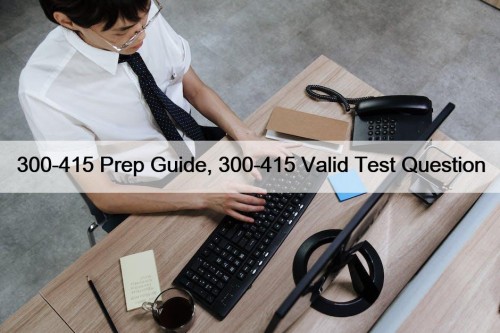Most Popular
![Best IIA IIA-IAP Dumps [2025] With Real Exam Questions](http://www.hotbloglist.com/thumbnails/23207739.jpg) Best IIA IIA-IAP Dumps [2025] With Real Exam Questions
Best IIA IIA-IAP Dumps [2025] With Real Exam Questions
2Pass4sure almost aimed to meet the needs of all candidates ...
 Test 156-587 Questions Vce & Valid 156-587 Exam Review
Test 156-587 Questions Vce & Valid 156-587 Exam Review
The CheckPoint 156-587 certification exam offers a great opportunity for ...
 300-415 Prep Guide, 300-415 Valid Test Question
300-415 Prep Guide, 300-415 Valid Test Question
DOWNLOAD the newest PremiumVCEDump 300-415 PDF dumps from Cloud Storage ...



Test 156-587 Questions Vce & Valid 156-587 Exam Review

The CheckPoint 156-587 certification exam offers a great opportunity for CheckPoint professionals to demonstrate their expertise and knowledge level. In return, they can become competitive and updated with the latest technologies and trends. To do this they just need to enroll in Check Point Certified Troubleshooting Expert - R81.20 (156-587) certification exam and have to put all efforts and resources to pass this challenging 156-587 exam. You should also keep in mind that to get success in the CheckPoint 156-587 exam is not an easy task.
CheckPoint 156-587 Exam Syllabus Topics:
| Topic | Details |
|---|---|
| Topic 1 |
|
| Topic 2 |
|
| Topic 3 |
|
| Topic 4 |
|
>> Test 156-587 Questions Vce <<
Valid 156-587 Exam Review & Latest 156-587 Exam Practice
The job with high pay requires they boost excellent working abilities and profound major knowledge. Passing the 156-587 exam can help you find the job you dream about, and we will provide the best 156-587 question torrent to the client. We are aimed that candidates can pass the 156-587 exam easily. The 156-587 Study Materials what we provide is to boost pass rate and hit rate, you only need little time to prepare and review, and then you can pass the 156-587 exam. It costs you little time and energy, and you can download the software freely and try out the product before you buy it.
CheckPoint Check Point Certified Troubleshooting Expert - R81.20 Sample Questions (Q39-Q44):
NEW QUESTION # 39
Which of the following would NOT be a flag when debugging a unified policy?
- A. connection
- B. tls
- C. clob
- D. rulebase
Answer: B
Explanation:
The Unified Policy is a feature that allows you to create a single policy layer that combines the functionality of Access Control, Threat Prevention, and HTTPS Inspection12. To debug the Unified Policy, you need to use the command fw ctl debug with the module name UP and the flag all or specific flags for different aspects of the Unified Policy inspection34. The possible flags for the Unified Policy module are:
up_match: Shows the matching process of the Unified Policy rules.
up_inspect: Shows the inspection process of the Unified Policy rules.
up_action: Shows the action process of the Unified Policy rules.
up_log: Shows the logging process of the Unified Policy rules.
up_tls: Shows the TLS inspection process of the Unified Policy rules.
up_clob: Shows the CLOB (Content Limitation and Optimization Blade) inspection process of the Unified Policy rules.
up_rulebase: Shows the rulebase loading process of the Unified Policy rules.
up_connection: Shows the connection tracking process of the Unified Policy rules.
The flag tls is not a valid flag for the Unified Policy module, as it is used for the TLS Inspection module5. Therefore, the correct answer is A. tls. The other options are valid flags for the Unified Policy module, as explained above34. Reference:
1: CCTE Courseware, Module 8: Advanced Access Control, Slide 7
2: Check Point R81 Security Gateway Architecture and Packet Flow, Chapter 5: Unified Policy, Page 29
3: CCTE Courseware, Module 8: Advanced Access Control, Slide 17
4: Check Point R81 Security Gateway Architecture and Packet Flow, Chapter 5: Unified Policy, Page 32
5: Check Point R81 Security Gateway Architecture and Packet Flow, Chapter 6: TLS Inspection, Page 36
NEW QUESTION # 40
In Check Point's Packet Processing Infrastructure, what is the role of Observers?
- A. They store Rule Base matching state related information
- B. Observers decide whether or not to publish a CLOB to the Security Policy
- C. Observers monitor the state of Check Point gateways and report it to the security manager
- D. Observers attach object IDs to traffic
Answer: B
Explanation:
NEW QUESTION # 41
What version of Check Point can Security Gateways begin dynamically distributing Logs between log servers?
- A. R81
- B. R75
- C. R77
- D. R30
Answer: A
Explanation:
Dynamic log distribution is a feature that allows the Security Gateway to distribute logs between the active Log Servers, instead of sending a copy of every log to each Log Server. This feature was introduced in Check Point R81.10 version, and it requires both the Management and the Gateways to be at least on version R81.10 for this to be supported12. With dynamic log distribution, the Gateway can optimize the disk space usage and network bandwidth consumption of the Log Servers, and also improve the performance and reliability of the logging system3. Reference: Dynamic logs distribution - Check Point CheckMates1, (CCTE) - Check Point Software2, SmartLog and SmartEvent R81.10 Administration Guide3
1: https://community.checkpoint.com/t5/Management/Dynamic-logs-distribution/td-p/142732 2: https://www.checkpoint.com/downloads/training/DOC-Training-Data-Sheet-CCTE-R81.10-V1.0.pdf 3: https://sc1.checkpoint.com/documents/R81.10/WebAdminGuides/EN/CP_R81.10_LoggingAndMonitoring_AdminGuide/html_frameset.htm
NEW QUESTION # 42
Which of the following file is commonly associated with troubleshooting crashes on a system such as the Security Gateway?
- A. CPMIL dump
- B. tcpdump
- C. fw monitor
- D. core dump
Answer: D
Explanation:
When troubleshooting crashes on a Security Gateway (or any Linux-based system), the file type that is typically generated and used for in-depth analysis is a core dump.
A core dump captures the memory state of a process at the time it crashed and is critical for root-cause analysis.
Other options:
A . tcpdump: A packet capture file, not a crash-related file.
C . fw monitor: A Check Point packet capture tool, but not for crash debugging.
D . CPMIL dump: Not a common or standard crash dump reference in Check Point.
NEW QUESTION # 43
Which of the following is a component of the Context Management Infrastructure used to collect signatures in user space from multiple sources, such as Application Control and IPS, and compiles them together into unified Pattern Matchers?
- A. PSL - Passive Signature Loader
- B. Context Loader
- C. cpas
- D. CMI Loader
Answer: B
Explanation:
NEW QUESTION # 44
......
Do you want to earn the CheckPoint 156-587 certification to land a well-paying job or a promotion? Prepare with 156-587 real exam questions to crack the test on the first try. We offer our Check Point Certified Troubleshooting Expert - R81.20 (156-587) Dumps in the form of a real 156-587 Questions PDF file, a web-based CheckPoint 156-587 Practice Questions, and 156-587 desktop practice test software. Now you can clear the Check Point Certified Troubleshooting Expert - R81.20 test in a short time without wasting time and money with actual 156-587 questions of Prep4pass.
Valid 156-587 Exam Review: https://www.prep4pass.com/156-587_exam-braindumps.html
- Quiz Useful 156-587 - Test Check Point Certified Troubleshooting Expert - R81.20 Questions Vce ↖ Simply search for 「 156-587 」 for free download on ➤ www.real4dumps.com ⮘ 😴156-587 Test Result
- 156-587 Test Result 💞 156-587 Reliable Test Labs 📙 156-587 Actual Test Answers 🌉 Go to website ▛ www.pdfvce.com ▟ open and search for 「 156-587 」 to download for free 🎵156-587 Valid Test Bootcamp
- Pass Guaranteed 2025 CheckPoint High-quality Test 156-587 Questions Vce 🥉 Open ⇛ www.passcollection.com ⇚ and search for ⮆ 156-587 ⮄ to download exam materials for free 🏗156-587 Practice Online
- 156-587 Valid Exam Vce Free 🎑 New 156-587 Test Notes 🩺 156-587 Latest Study Guide 😌 Search for ⮆ 156-587 ⮄ and easily obtain a free download on 《 www.pdfvce.com 》 🧱156-587 Test Certification Cost
- Valid 156-587 Test Practice 🖍 156-587 Exam Pattern 📣 Valid 156-587 Test Practice 📔 Search for ☀ 156-587 ️☀️ and obtain a free download on ➠ www.lead1pass.com 🠰 💎156-587 Valid Exam Vce Free
- 156-587 Reliable Test Labs ⌨ New 156-587 Test Notes 🧐 Latest 156-587 Exam Materials 🏪 Search for ⮆ 156-587 ⮄ and obtain a free download on 「 www.pdfvce.com 」 📸156-587 Interactive EBook
- 156-587 Valid Test Bootcamp 😣 Valid 156-587 Test Practice ⏸ 156-587 Valid Test Bootcamp 👯 Enter { www.getvalidtest.com } and search for 【 156-587 】 to download for free 🛺156-587 Test Pass4sure
- 156-587 Exam Pattern 🥒 156-587 Practice Online 🤎 Valid 156-587 Test Practice 🌜 Search for ▛ 156-587 ▟ and easily obtain a free download on ⇛ www.pdfvce.com ⇚ ⏬Latest 156-587 Exam Materials
- Valid 156-587 Test Practice 🍧 156-587 Valid Exam Vce Free 🥜 Valid 156-587 Test Practice 🚨 Open ▶ www.testsimulate.com ◀ enter { 156-587 } and obtain a free download 🥁156-587 Interactive EBook
- Valid 156-587 Exam Guide 📩 156-587 Exam Pattern 🌋 156-587 Valid Test Bootcamp 🧙 ☀ www.pdfvce.com ️☀️ is best website to obtain ➽ 156-587 🢪 for free download 🍎156-587 Valid Exam Vce Free
- Pass Guaranteed 2025 CheckPoint High-quality Test 156-587 Questions Vce ❇ Copy URL ➤ www.testsimulate.com ⮘ open and search for ➡ 156-587 ️⬅️ to download for free 💾Exam 156-587 Reference
- 156-587 Exam Questions
- www.gtcm.info soulroutes.org.in www.palunion.org chriski438.blogsidea.com wp.movix.to uniofai.com courslin2.com gr8-ideas.com zist.cloud commercevadiya.lk
Tags: Test 156-587 Questions Vce, Valid 156-587 Exam Review, Latest 156-587 Exam Practice, Reliable 156-587 Exam Online, Key 156-587 Concepts